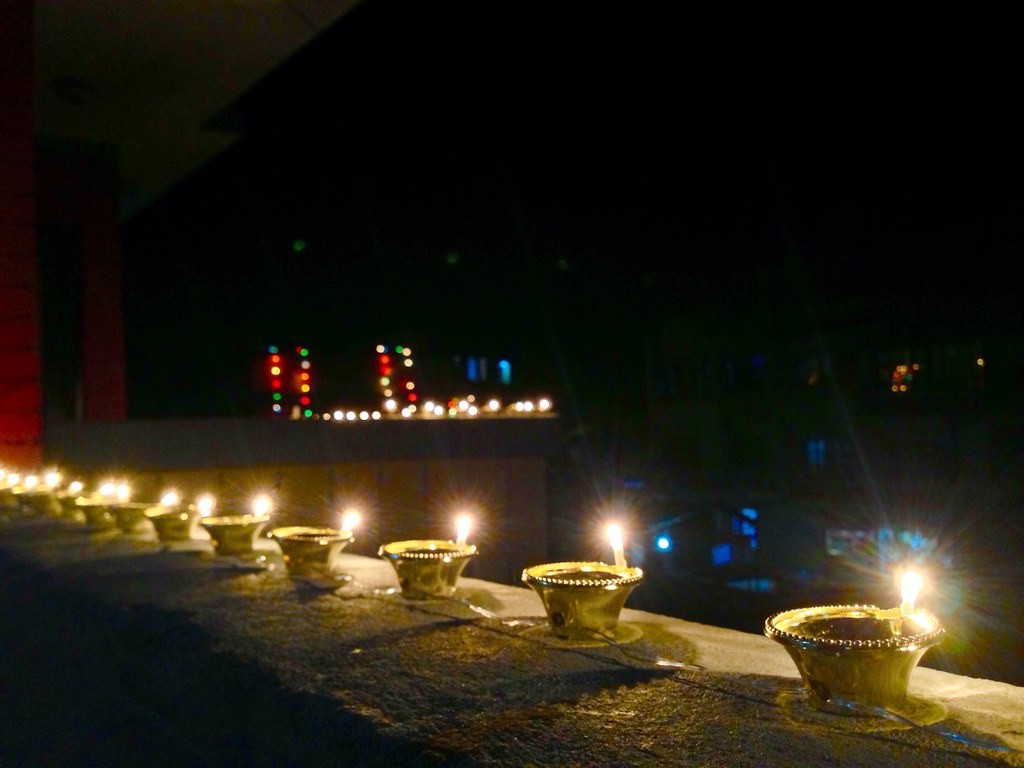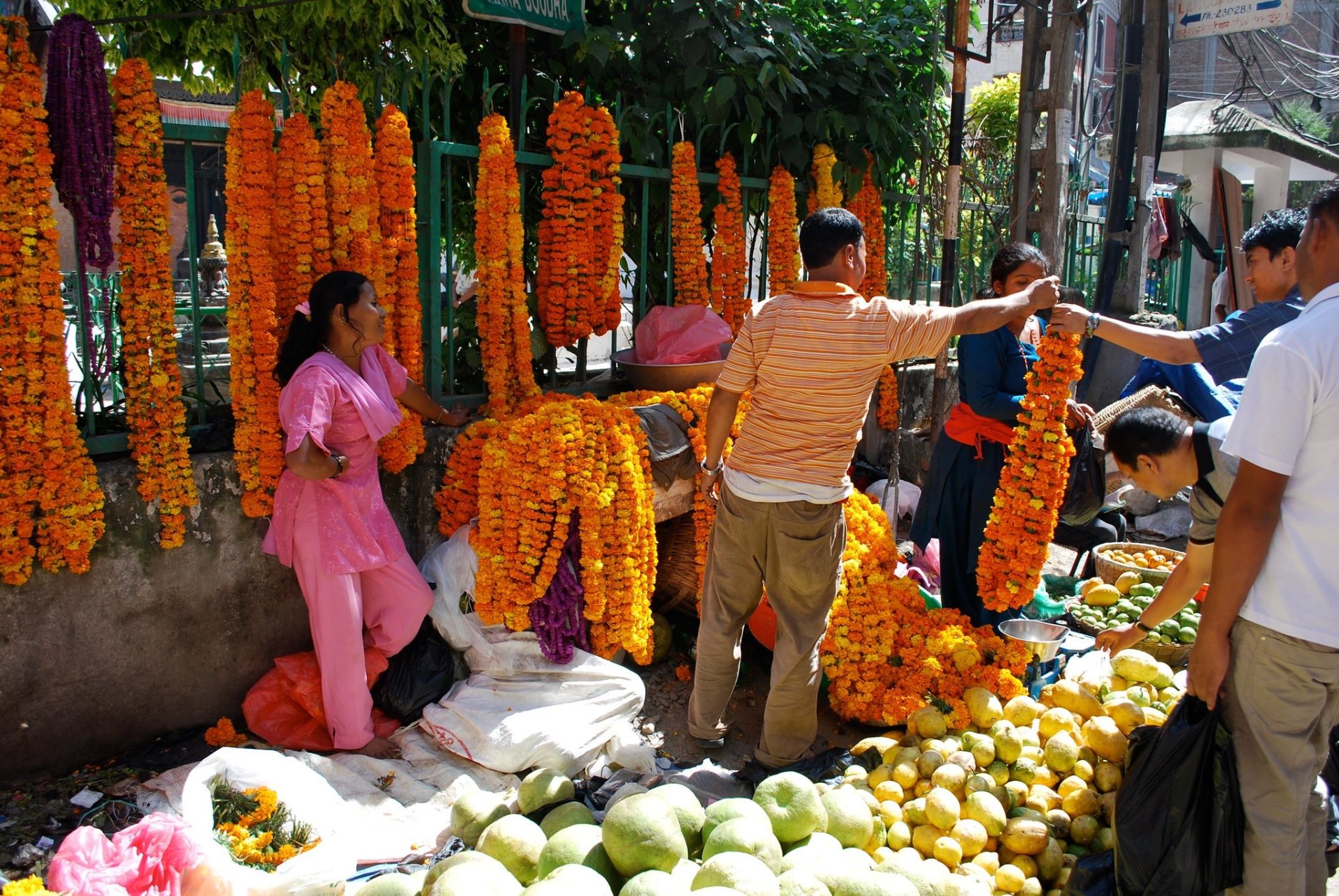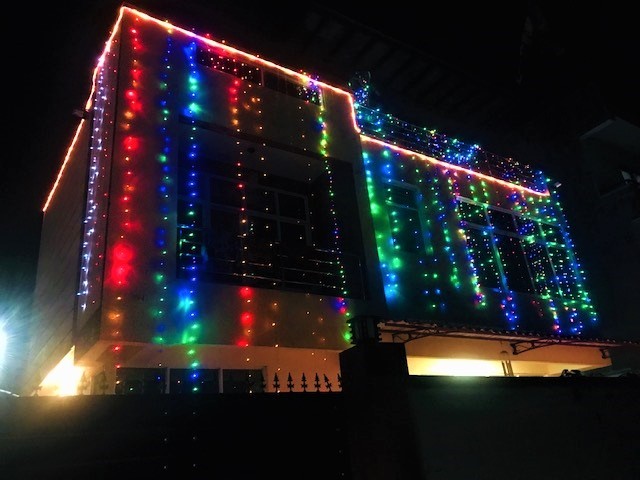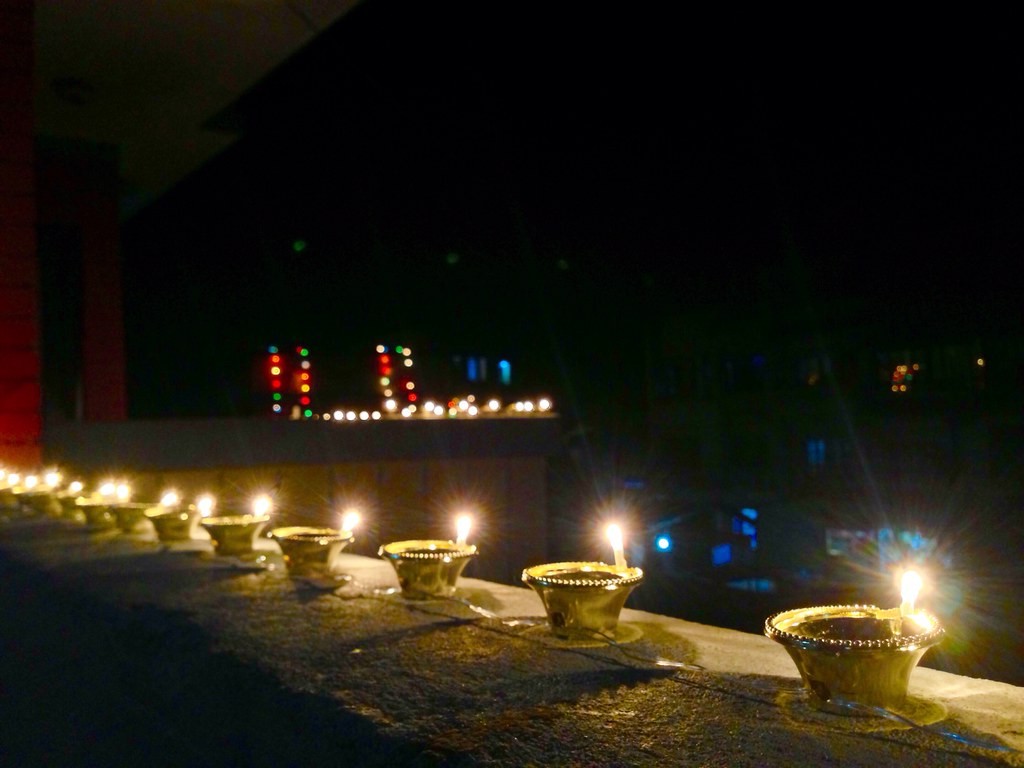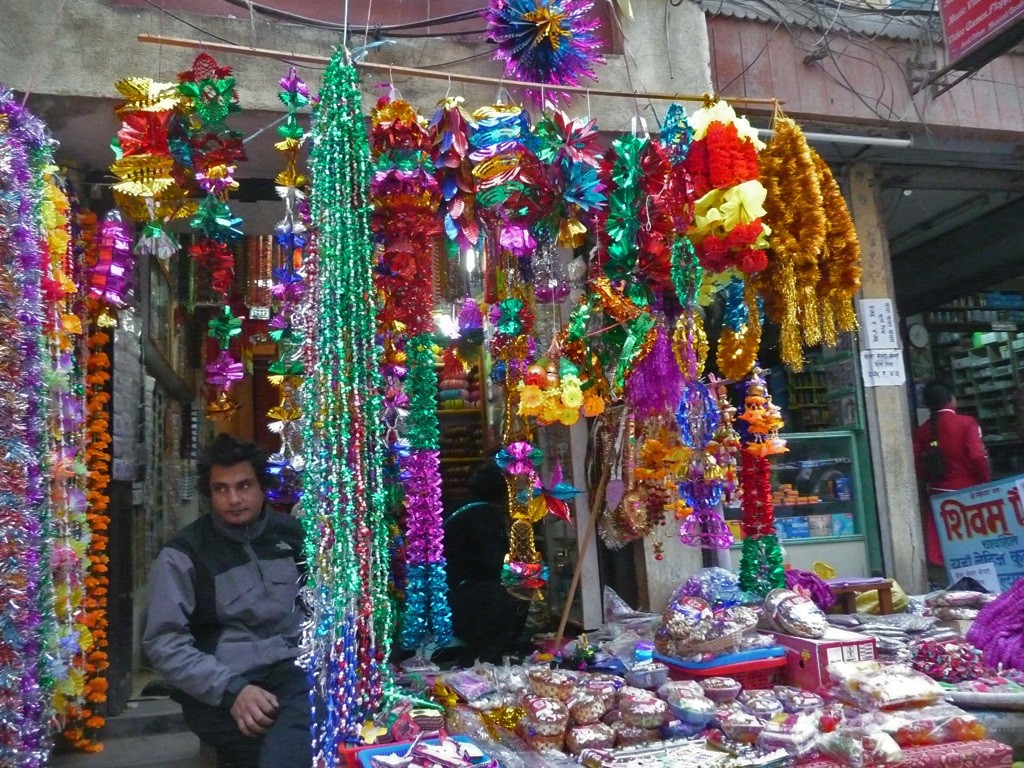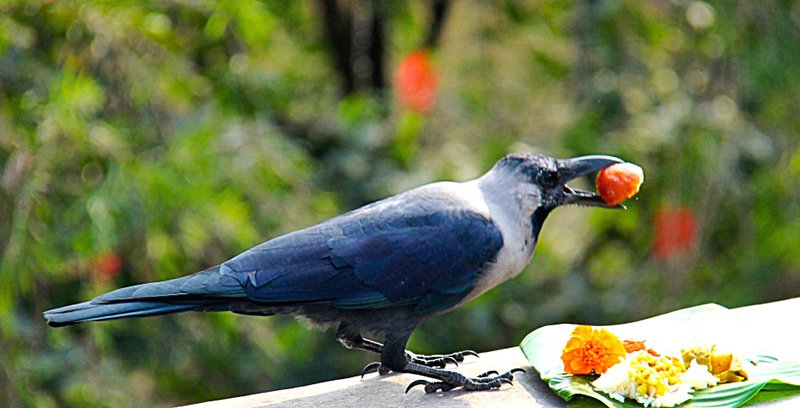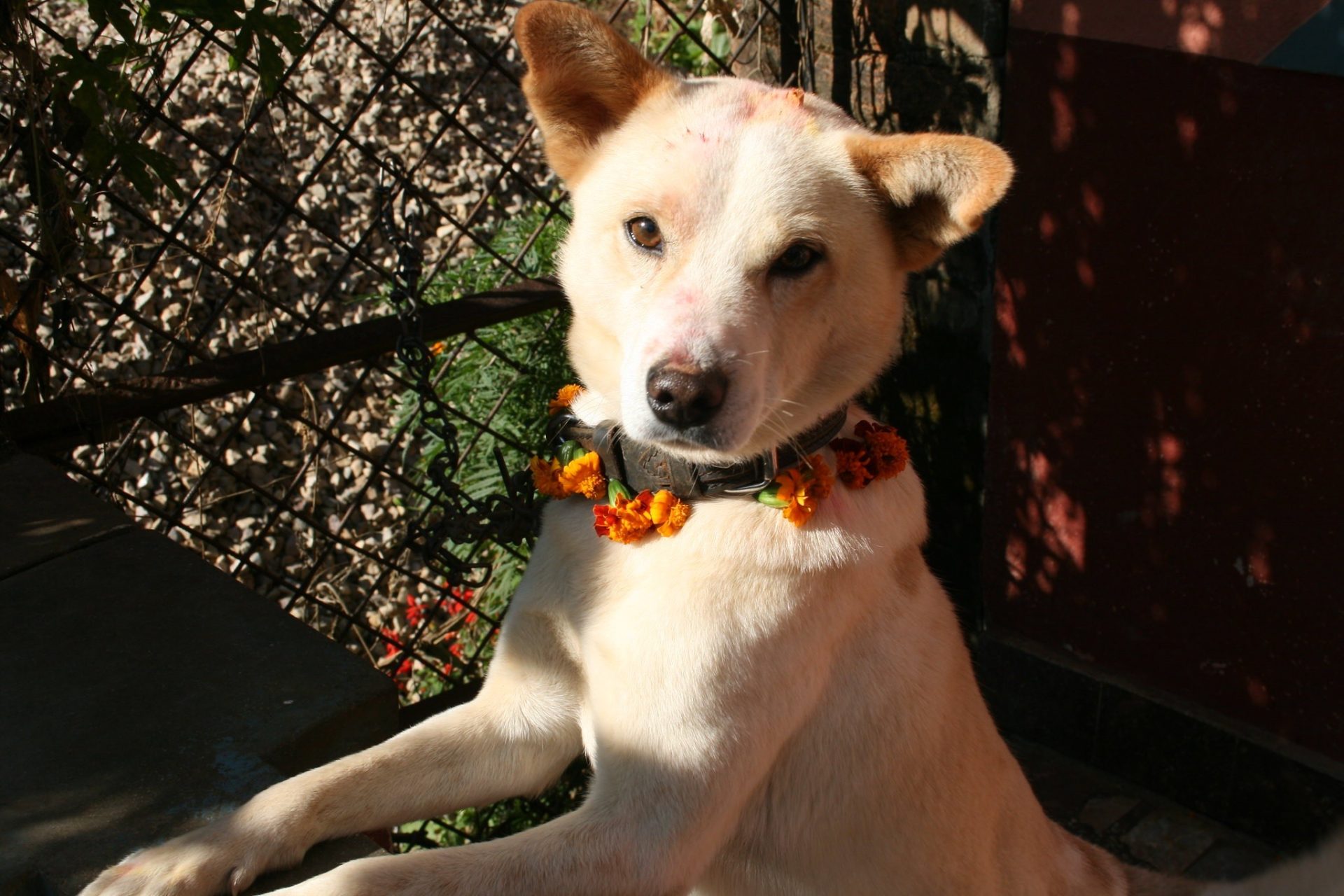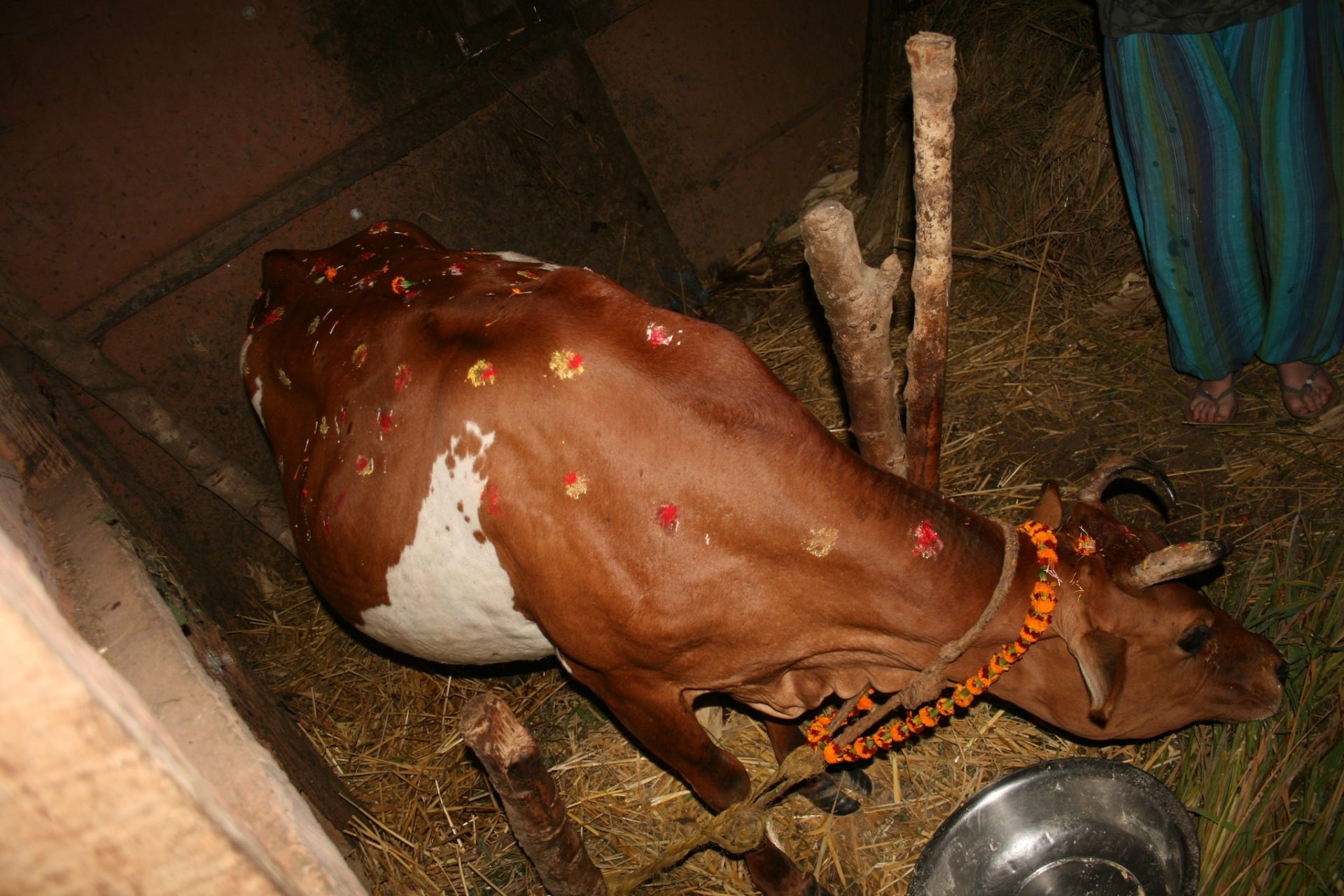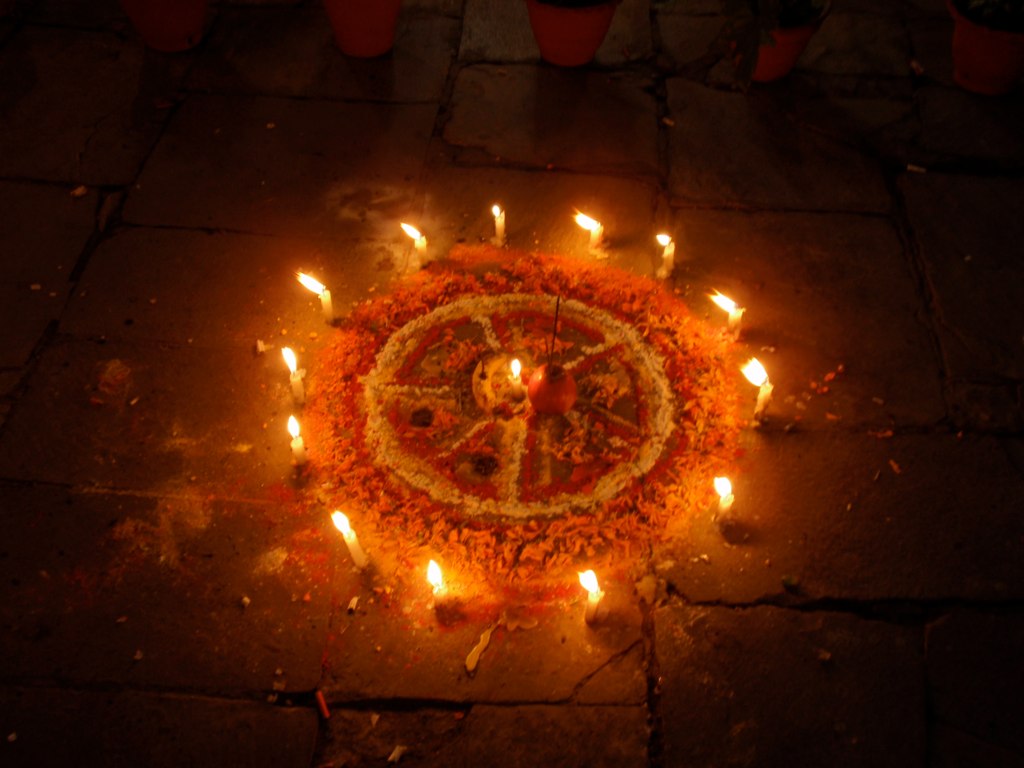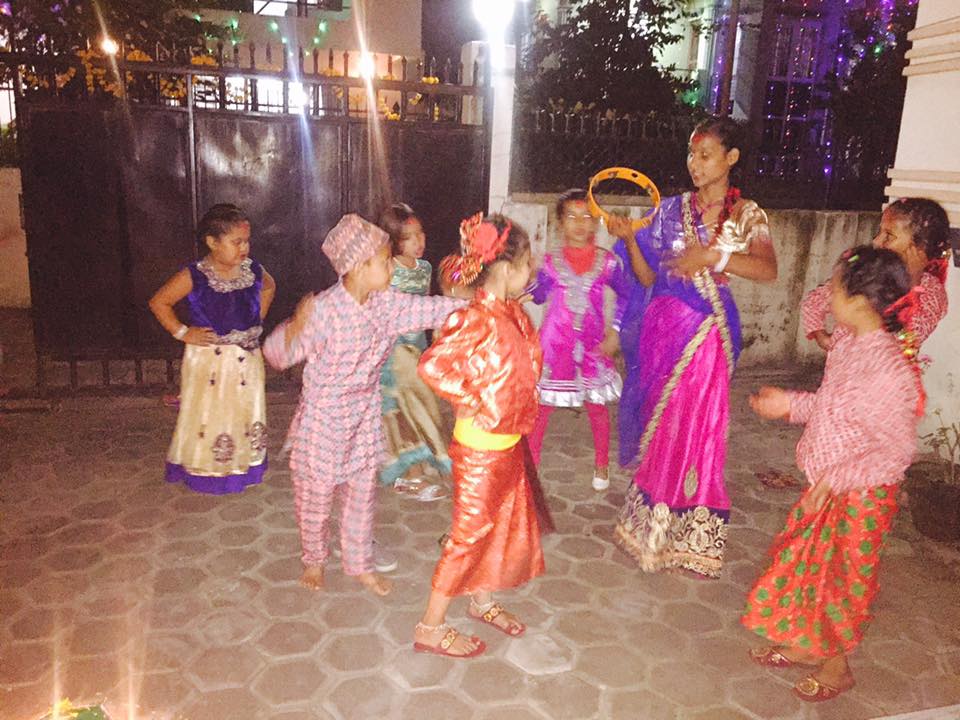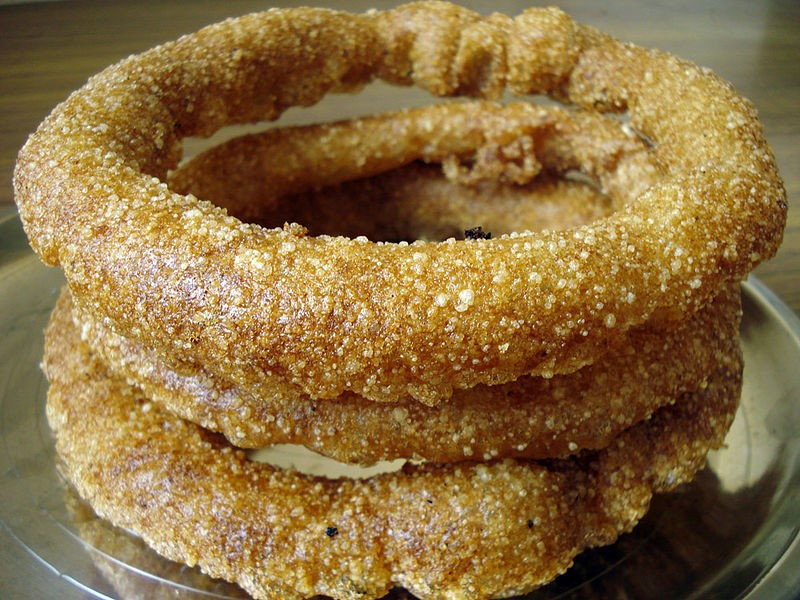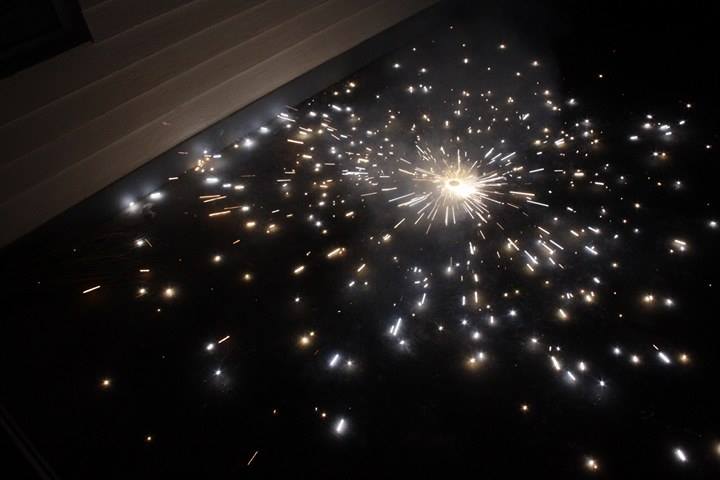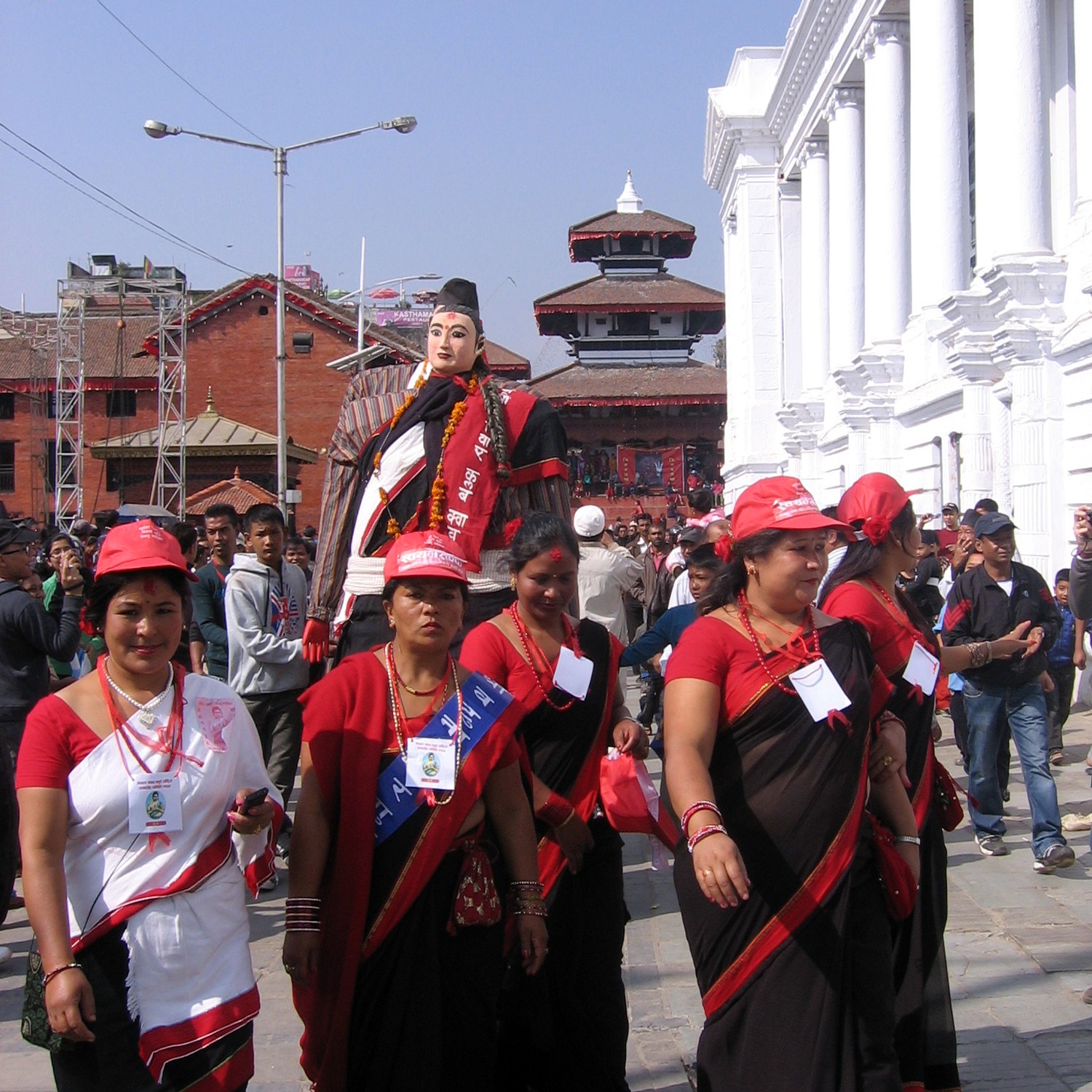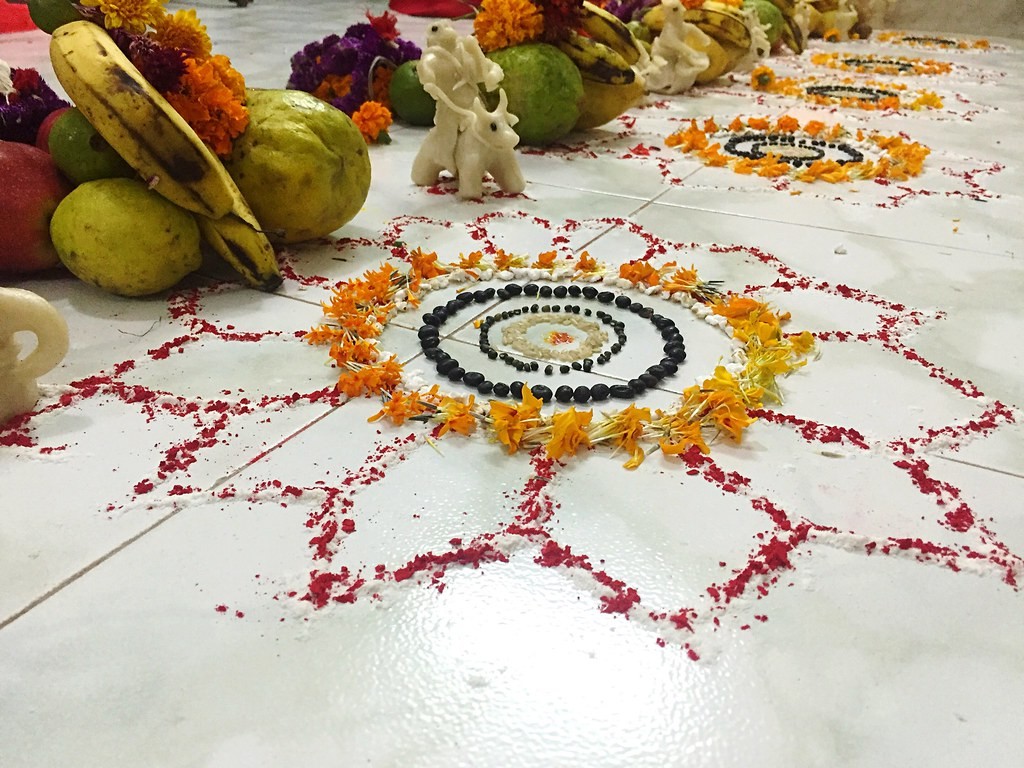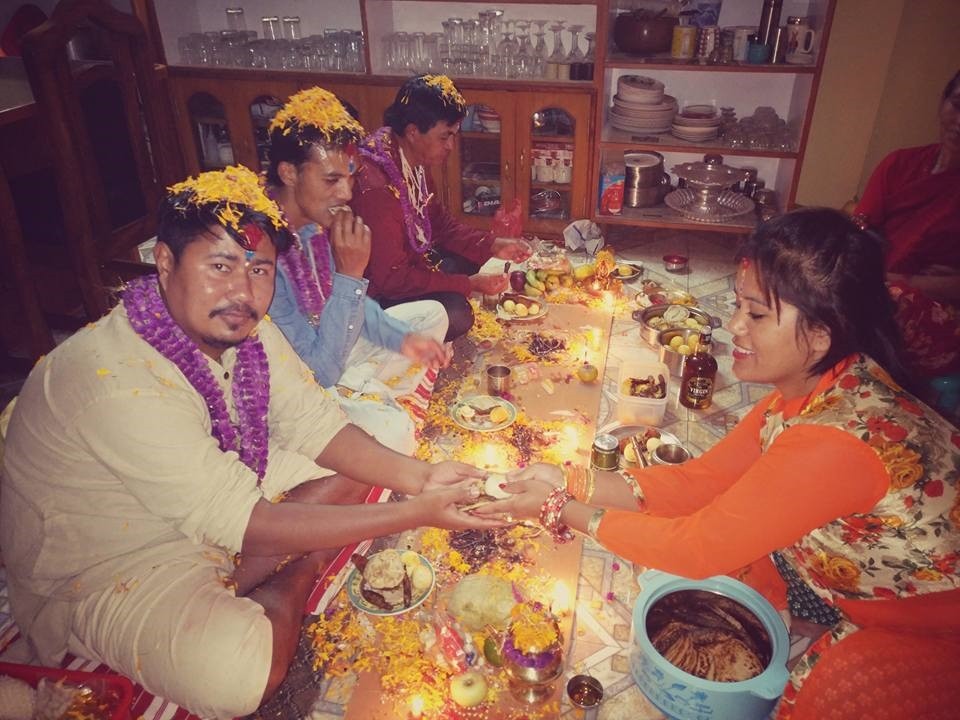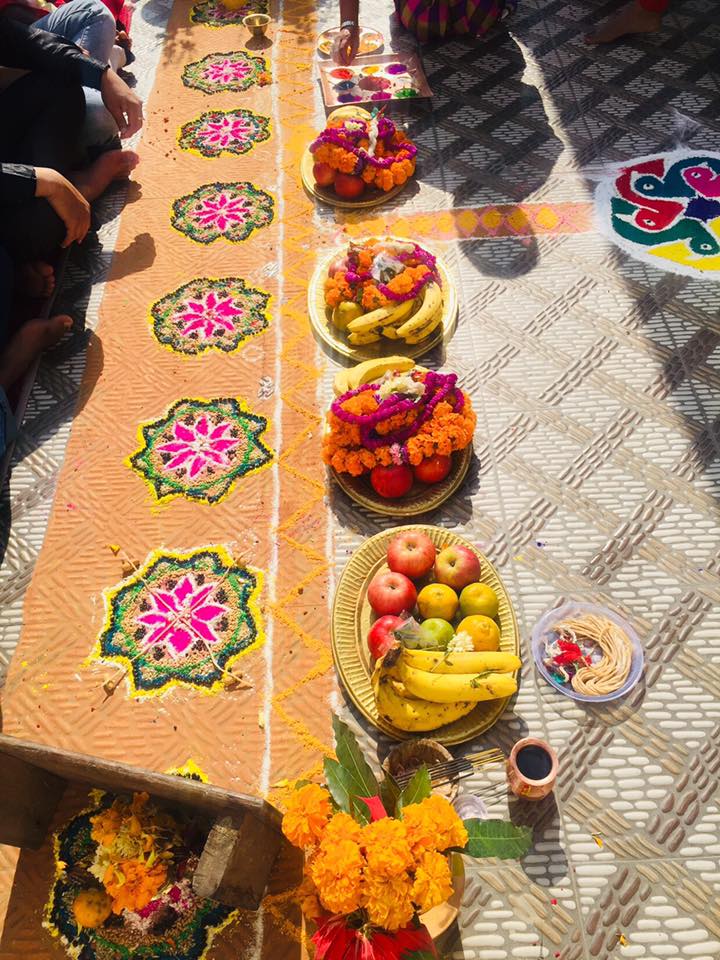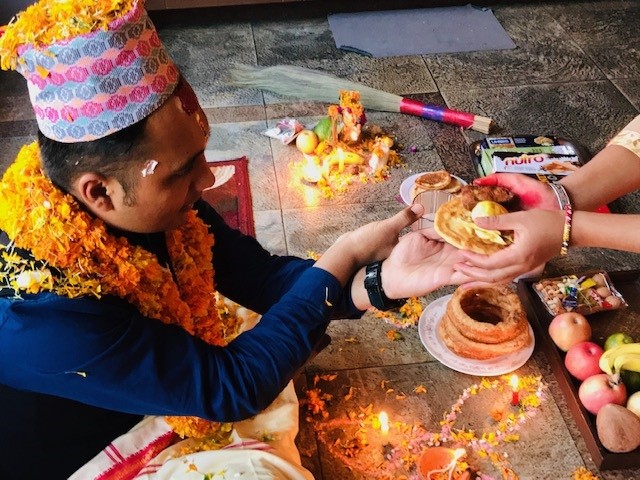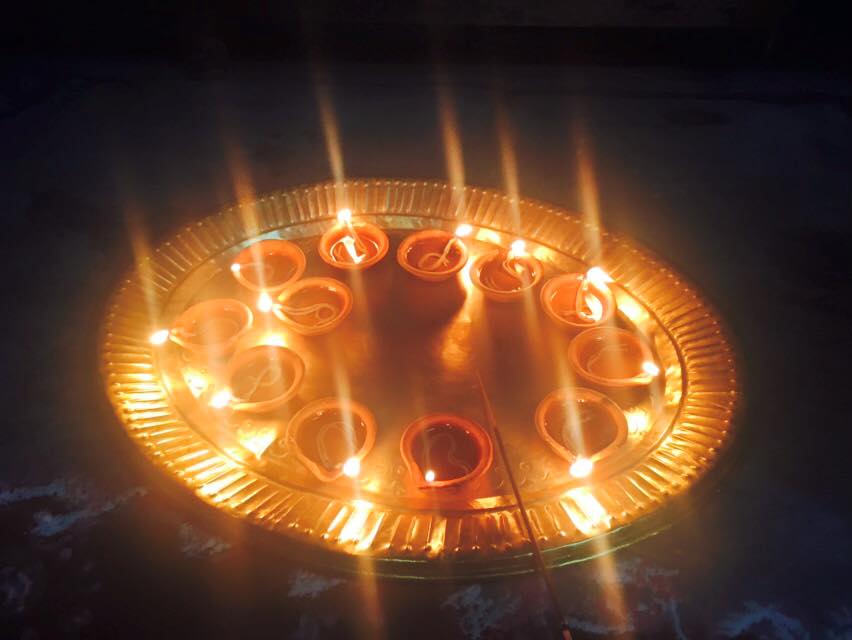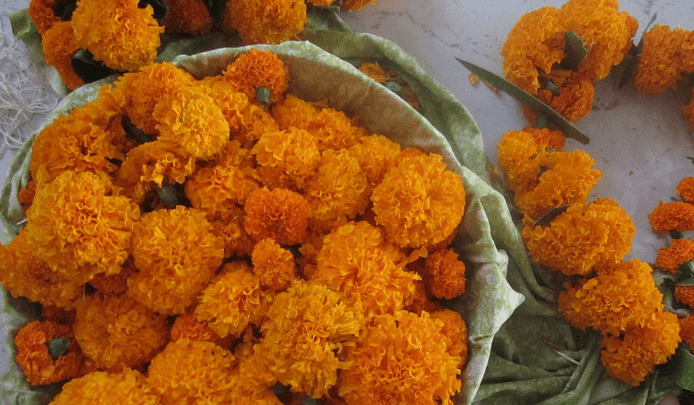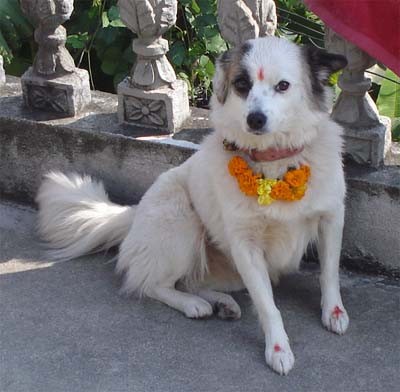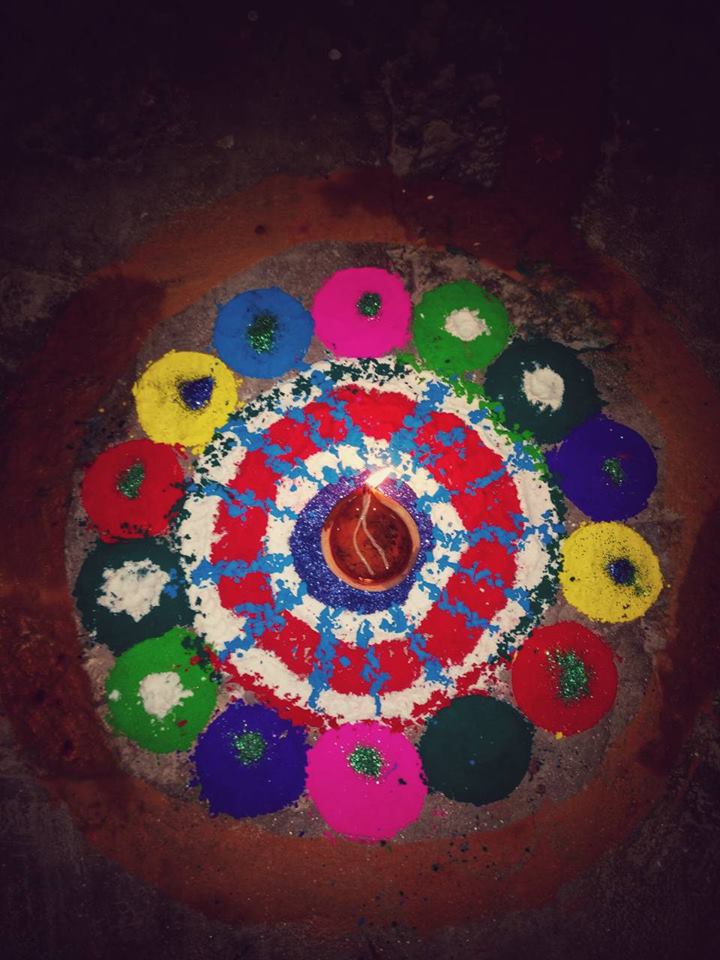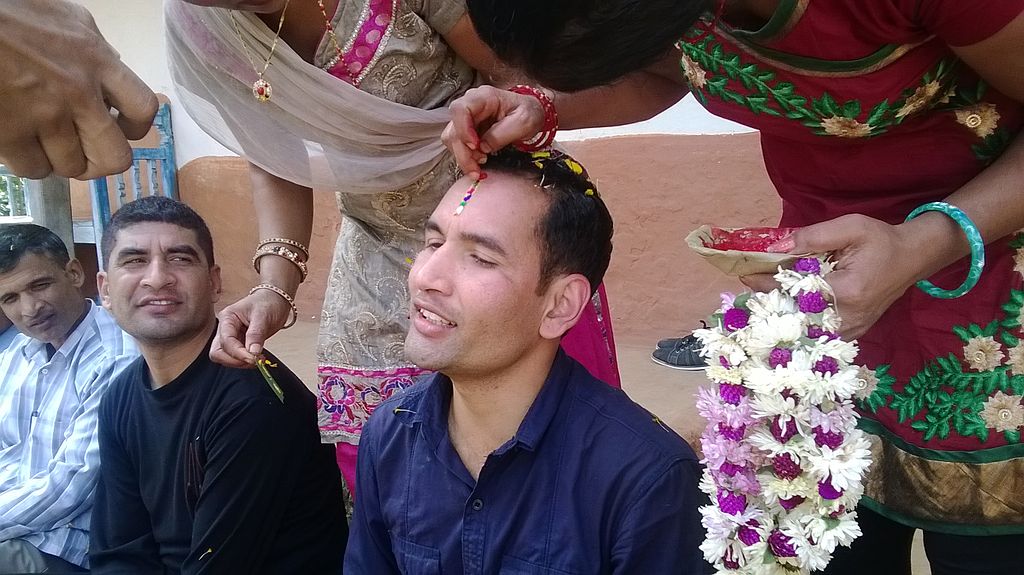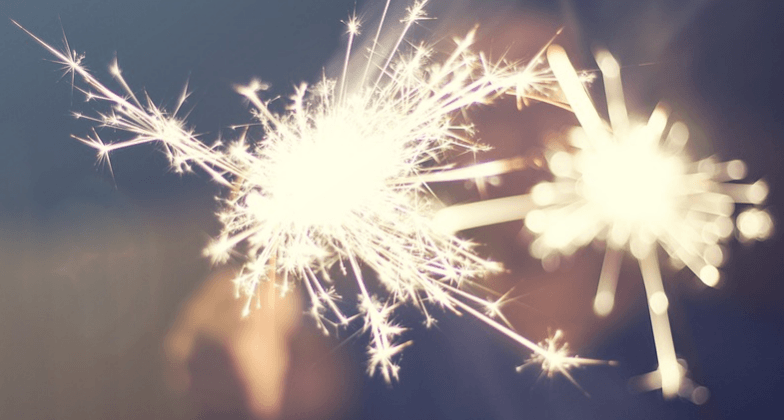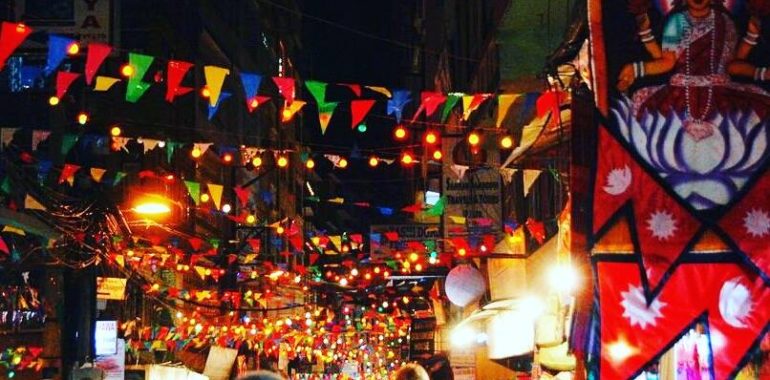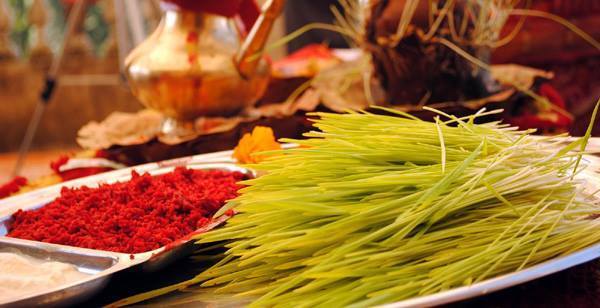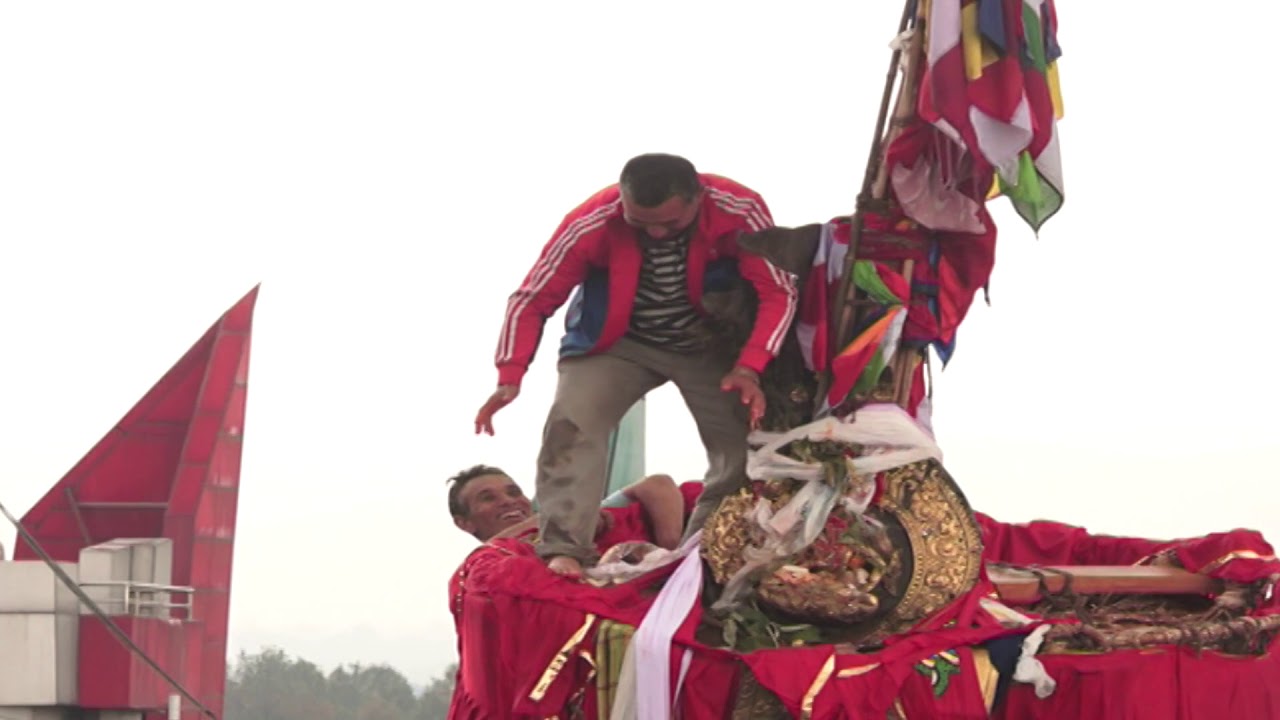About Tihar Festival
The festival of Tihar heralds winter, vibrantly lighting up the horizon of towns and villages of Nepal. Tihar, the most anticipated festival for Nepalese is approaching which falls after two weeks of Dashain. It is mostly evoked as a festival of lights and color where diyos are lit both inside and outside the houses to make it brighten at night to welcome Goddess Lakshmi, who gives blessings of wealth and prosperity. In the meantime, one can feel the aroma of Sayapatri and the purplish radiance of Makhamali all around the streets and homes.
Generally, Tihar occurs between mid-October and early November. This year Tihar date falls on October 26-29, 2019. If you’re planning to visit Nepal to do one of the amazing treks with family, solo or school groups then you will get an opportunity to experience this unique celebration and create some incredible memories. Besides, one can witness the lively atmosphere, vibes of happiness, and the feeling of harmony. With colorful lights embellishing the entire city, this blissful occasion is also when the travelers can actually revel in the religious performs presented in quite an extravagant manner.
Deepawali is another name of Tihar. Literally, Deepawali means rows of Diyos (clay lamps). The word “Deepawali” comprises of two words; “Deep” means “light” and the word “avail” means “a row”. Therefore, “Deepawali” means “a row of lights”.
This five days festival celebrated in honor of Yama–the god of death and Lakshmi–the goddess of wealth and power with great zeal, grandeur, brightness, and happiness. The festival considered to be of great significance as it shows admiration to not just humans and the deities, but also to the animals like crows, cows, and dogs who maintain a deep relationship with humans.
As the festival is all about rituals, a variety of delicacies, firecrackers, colors of blessings and flowers like marigold (Sayapatri) and globe amaranth (Makhamali). Everything that creates from nature is thought to have some implications for human life.
Day 1: Kaag Tihar- mediator between the human realm and the realm of souls
The five-day celebration of Tihar begins with the worship of crow. Crow is appreciated for being a messenger who fetches news when it crows and also regarded to be the mount of Yamaraj or the god of death. Crow is a bird with a high sense of identifying human souls. According to Hindu mythology, the cawing of the crows signifies bad luck, sadness, and grief. So, worshiping them is deemed to bring good fortune.
Another reason for worshiping crow is it feeds on the insects that invade and destroy the harvests. When crows fly around growing crops, it is reflected a good indicator, and a healthy crops is predicted.
Therefore, on this day, people offer home prepared delicacies placed on the roofs of houses in the morning to please the crow to protect the crops and to avoid death.
Day 2: Kukur Tihar or Khicha Puja: Symbolize special relationship between dogs and humans
The second day of Tihar also called the Khicha Puja (worship of dogs) by the Newars dedicated to dog and represent the special bond between humans and dogs
The dog is a faithful and favorite companion of humans and, much cherished for their loyalty. Humans have an exceptional connection and affection with dogs since they are intelligent beings, who have the skill to empathizes with their caretakers and respond according to their feelings.
In Hindu Mythology, dogs considered as Yamaraj’s doorkeeper of Naraka, (Hell) that ensures the soul’s journey to judgment. So this day also celebrated as Naraka Chaturdashi. Likewise, Dog is regarded as a vehicle of Bhairava, a fierce manifestation of Lord Shiva.
On this day, dogs garlanded with marigold flowers, vermilion on their heads and make special offerings to them. The best part about this day is that, those who don’t own a dog pay homage to homeless dogs and treated with special food. In addition, the dog involves in public services, such as police dogs, are held in high honor and show adoration for their diligence.
In 2016, Mexico started to celebrate Kukur Tihar as they were motivated by the Nepali festival to raise awareness there about the reverence humans owe to all animals. Since then, the festival has increased popularity, and dogs have been chosen for a special honor.
Day 3: Gai Tihar and Laxmi Puja- Honor to cow and divinity of wealth and prosperity
Cows, revered as earthly manifestation, are bathed, blessed and the sacred thread of protection knotted to the tail. There is the practice of tying the holy thread that is tied around one’s wrist on the day of the Janai Purnima festival on the tail of the cow while carrying out Gai Puja. It is said that doing so the cow would facilitate the person’s soul cross the Baitarani River, a mythical river, to paradise, after the person’s demise.
People worship cows in this day as cows have benefited humans in several ways by giving dairy products, and dung as a source of fuel and fertilizer. Henceforth cows became a symbol of ‘caretakers’, or a maternal figure. On this day, devotees pay respect to cows by feeding her with the best grass and put flower garlands around the neck.
In the afternoon, people clean up their homes and coat walls and floors with a mixture of red mud and cow dung. There is a practice of making footprints of Laxmi from the main entrance to the worship room. There is a belief that the footsteps bring wealth, good health and prosperity to the family.
They drew a mandala with colorful pigment powders, decorate with flower petals in front of the house and light candles inside small, lively work of art. The mandala signifies a sacred area, welcoming the divine into houses and businesses.
The ritual for the goddess performed on the eve of the moonless sky leaving the doors open for the deity and wealth to glide in. As dusk started, oil lamps and decorative lights are illuminated and fill the gloomy night as constellations in the sky.
The echoes of special carols called bhailo are another fascinating feature in the eve of Laxmi Puja day. A groups of girls go door to door and perform Bhailo songs and dances asking the gods to sanctify the family with prosperity and sound health. There is a belief that Vaili blessings bring bliss and fortune to the family. In return, the host families offer money and homemade treats.
There is a custom of offering auspicious vegan food to Goddess Laxmi on this day. The main highlight food of this festival is sel roti, prepared in almost all houses especially in Tihar. Apart from this, people of every household prepare other varieties of popular confectioneries and delicacies.
Likewise, people purchase gold and silver, new utensils on the day of Laxmi puja as a sign of good fortune and prosperity. People engaged in the financial sector and businesses hold Laxmi puja as extra significance. They celebrate this occasion with more gusto as this specific worshiping of the Goddess associated with money. Therefore, people adorned shops and other business organizations with flowers, oil lamps, and candles and even LED lights.
Another entertaining way of enchanting Tihar vibes is witnessing sparks of vibrant firecrackers up in the sky that leaves you fascinated.
Day 4: Govardhan Puja, Nepal Sambat and Mha Puja- Praying for good harvest and worship of self
The numerous communities celebrate the fourth day of Tihar in their own way. Farmers reverence their implements and their bull since they till lands and help in harvesting to sustain life. Most people carry out Gobardhan puja by making hillock of cow dung. The cow dung hillock represents the mountains, and farmers pray for rain, productive fields, and plentiful harvest.
Govardhan Puja is the instance of winning over the intellect. The rituals are related to the Hindu Lord Sri Krishna who, according to the myth, raised Govardhan Mountain (problem) on his one finger (one point determination) to protect the people of a place called Gokul from heavy rains made by Indra, the God of rain.
This day symbolizes the advent of the New Year for the Newar community, traditionally known as Nepal Sambat. It is believed Shankhadhar Sakhwa, a local merchant from Kathmandu paid off the debts of people on his own during the rule of Lichchhavi King Raghadev in 880 AD. The government declared Shankhadhar Sakhwa who propounded the Nepal Sambat calendar and made notable contribution to society and the nation as national luminary in November 18,1999.
Newar community on the night conduct Mha puja (worship of self). The worship of the soul is a uniqueness of the community. Mha Puja is centered on the religious belief that the soul or self is the most significant in the world and that if the soul is happy, the gods are also satisfied and one’s life becomes meaningful and successful. Read more to learn more about Mha Puja.
As dusk falls, a group of males gathers and visit houses with musical instruments singing and dancing called Deusi. As stated in the chorus of the songs, deusi-bhailo has started a part of admiration to the Treta Yuga King Bali. According to Hindu legend, King Bali was very kind that all who went to visit him give back with all wishes fulfilled. He deceived into giving up his kingdom through the conspiracy of Devas and their chief plotter, the Lord Bishnu. It stated that during Tihar, Bali gets his kingdom back for five days and that is what the deusi and bhailo song started.
Day 5: Bhai Tika: Warm bonding between brothers and sisters
Bhai Tika marked the relationship of Yama with his sister which has exceptional importance in fostering deeper affection and respect. The myth behind the tradition states that one-day Yamraj, the god of death visited her sister, the Yamuna. She offered delicious dishes, the garland of makhamali and sayapatri flowers and blessed tika on his forehead. They relished eating foods and sweets, chatting and sharing their moments. Being so much delighted, Yamraaj gifted the Yamuna a blessing that any brother who receives the tika and garland of flowers from sisters will be surpassing death for that day.
To initiate the ceremony, the sister draws three mandaps at a selected place for Lord Ganesh, Janmaraj (the God of Birth), and Yamaraj. The worship follows a traditional procedural in which sister encircle brothers, with sacred water and mustard oil as a boundary over which death and evil spirits cannot come in. Then after, they apply oil to their brother’s hair, following which a seven-color tika applied on the brother’s forehead.
Along with the tika, the sisters offered their brothers with the garlands of flowers along with sweets and fruits. Then sisters break the walnut with the stone by placing it in the middle area of the house entrance. And pray the god to avoid every problem that may fall on their brothers in forthcoming days. In return, the brothers bring special gifts to the sisters and each other prays for the success and wellbeing.
Bhai Tika in Newari Community
Newari communities called Bhai Tika as Kija Puja. People draw mandala in the designated place for god and brother. Then, long-burning wicks placed next to the mandala, along with sacred threads, masala- (a mixture of nuts) and fruits.
The sisters then offer Sagun to their brothers which comprises of auspicious food varieties. The five items wine, meat, fish, lentil cake and egg indicate the five tantric concepts of light, earth, water, air, and sky respectively.
After concluding the ceremony, sisters treat their brothers with lavish meals. As per family tradition, the ceremony performed either at sister’s home or at the brother’s home. On this day, those who do not have brothers and sisters visit Rani Pokhari to worship Lord Shiva. The temple opens to the public only on the occasion of Bhai Tika. The joyous day comes to an end with feelings of love and rejuvenation of the sibling’s connection.
FAQ
When is the best festive season in Nepal?
The festival and carnival take place all year round. The major festival Dashain and Tihar falls during October and November and these months are the ideal month for trekking.
What is the festival of the mountain region?
Nepal is famous for its mountains as well as vibrant festivals. The Nepalese festival calendar sees over fifty festivals observed across the country annually. Nepal celebrates several festivals depending on religious, ethnicity and castes. Not only has our ethnicity decided the festivals we celebrate, but the region where we belong too. i.e. Tiji festival, Mani Rimdu Festival
What is the popular festival in Nepal?
Festivals are a perfect way for travelers to experience the local culture first-hand. Apart from Dashain and Tihar, there are several festivals that trekkers can participate in. Want to know more about numerous interesting festivals celebrated in Nepal? Read more
Can I participate with locals to celebrate Tihar?
Nepal Sanctuary Treks integrate the festival events in the Itinerary. We organize a trek or tour in Nepal with a celebration of the festival. If you are planning to venture trek or any other tours in Nepal with family, individual or school groups.
Do you need to get a visa to travel to Nepal?
All nationals must hold a valid passport. Your passport must be valid for at least six months beyond your expected date of departure from Nepal. An entry visa required for all except Indian nationality. You need to arrange these prior to departure with the relevant embassy/consulate or you even get a visa on arrival. Learn more: Visa and Documents requirement
Can I apply for the visa online?
You can get visa online – filling the form and following the step by step procedure at http://online.nepalimmigration.gov.np/tourist-visa

